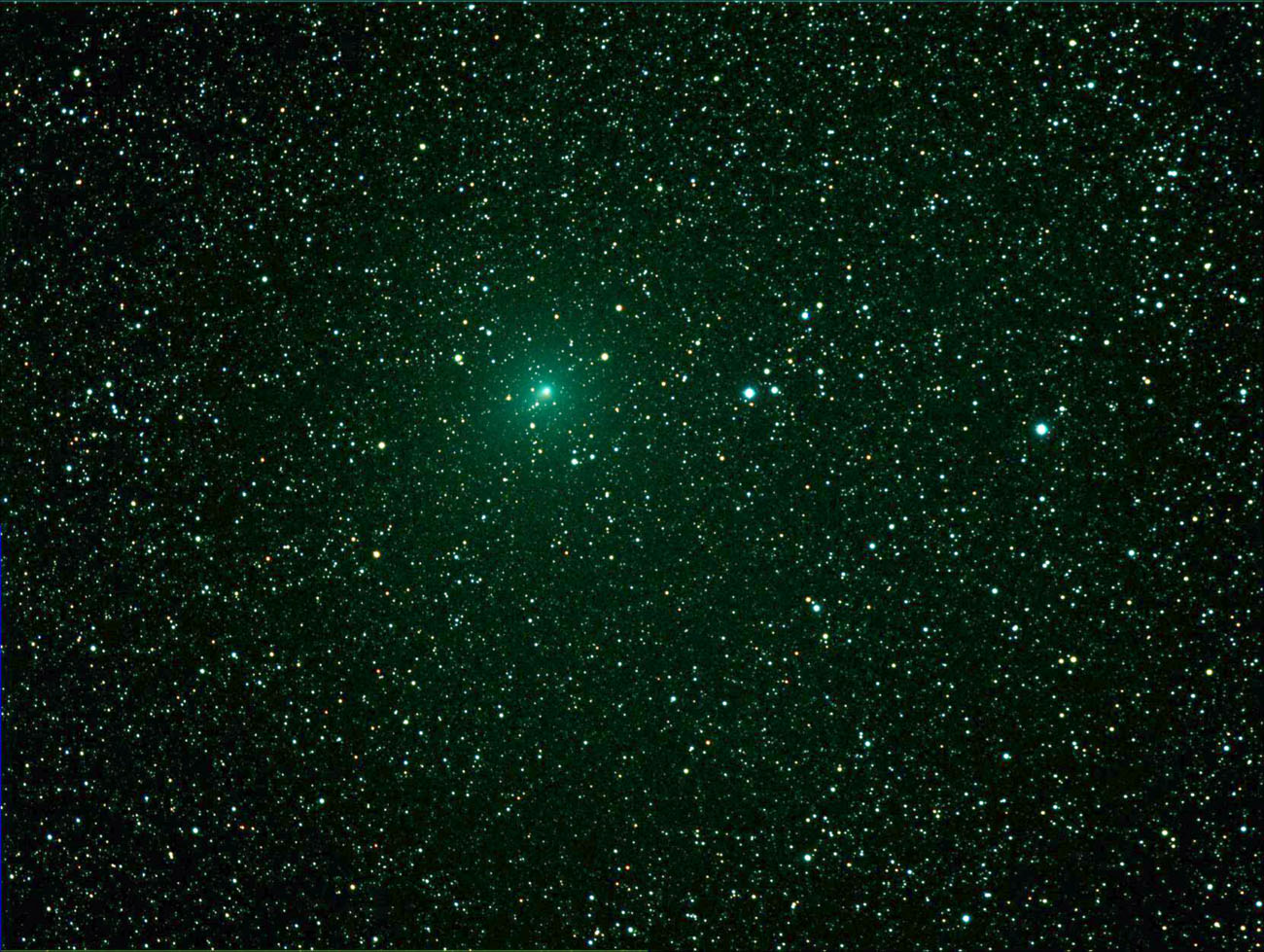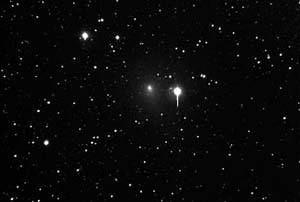EPOXI
Two intriguing investigations -- One flight-proven spacecraft
News: The Comet Cometh: Hartley 2 Visible in Night Sky, 2010.10.19
Press Release
The Comet Cometh: Hartley 2 Visible in Night Sky2010.10.19

This image of comet Hartley 2 was captured by amateur astronomer Byron Bergert on Oct. 6 in Gainesville, Florida using a 106 mm Takahashi astrograph.
Credit: Byron Bergert
PASADENA, Calif. -- Backyard stargazers with a telescope or binoculars and a clear night's sky can now inspect the comet that in a little over two weeks will become only the fifth in history to be imaged close up. Comet Hartley 2 will come within 17.7 million kilometers (11 million miles) of Earth this Wed., Oct. 20 at noon PDT (3 p.m. EDT). NASA's EPOXI mission will come within 700 kilometers (435 miles) of Hartley 2 on Nov. 4.
"On October 20, the comet will be the closest it has ever been since it was discovered in 1986 by Australian astronomer Malcolm Hartley," said Don Yeomans, head of NASA's Near-Earth Object Office at the Jet Propulsion Laboratory in Pasadena, Calif. and a member of the EPOXI science team. "It's unusual for a comet to approach this close. It is nice of Mother Nature to give us a preview before we see Hartley 2 in all its cometary glory with some great close-up images less than two weeks later."
Comet Hartley 2, also known as 103P/Hartley 2, is a relatively small, but very active periodic comet that orbits the sun once every 6.5 years. From dark, pristine skies in the Northern Hemisphere, the comet should be visible with binoculars as a fuzzy object in the constellation Auriga, passing south of the bright star Capella. Viewing of Hartley 2 from high ambient light locations including urban areas may be more difficult.

The animation shows Comet Hartley 2 moving through the night sky on Oct. 1, 2010 as captured by amateur astronomer Patrick Wiggins of Utah. The animated gif consists of a series of 13 ten-second exposures of the comet each spaced five minutes apart between 0901 and 1004 UTC. Wiggins, who is also a NASA/JPL Solar System Ambassador, used a 35cm Celestron C-14 operating at f/5.5.
Credit: Patrick Wiggins, NASA/JPL Solar System Ambassador
In the early morning hours of Oct. 20, the optimal dark sky window for mid-latitude northern observers is under two hours in length. This dark interval will occur between the time when the nearly-full moon sets at about 4:50 a.m. (local time) and when the morning twilight begins at about 6:35 a.m.
By October 22, the comet will have passed through the constellation Auriga. It will continue its journey across the night sky in the direction of the constellation Gemini.
EPOXI is an extended mission that utilizes the already "in-flight" Deep Impact spacecraft to explore distinct celestial targets of opportunity. The name EPOXI itself is a combination of the names for the two extended mission components: the extrasolar planet observations, called Extrasolar Planet Observations and Characterization (EPOCh), and the flyby of comet Hartley 2, called the Deep Impact Extended Investigation (DIXI). The spacecraft will continue to be referred to as "Deep Impact."
JPL manages the EPOXI mission for NASA's Science Mission Directorate, Washington. The University of Maryland, College Park, is home to the mission's principal investigator, Michael A'Hearn. Drake Deming of NASA's Goddard Space Flight Center, Greenbelt, Md., is the science lead for the mission's extrasolar planet observations. The spacecraft was built for NASA by Ball Aerospace & Technologies Corp., Boulder, Colo.
Images and videos of comet Hartley 2 from both amateur observers and major observatories are online at: http://aop.astro.umd.edu/gallery/hartley.shtml .
For more information about EPOXI visit epoxi.astro.umd.edu/ .
DC Agle
Jet Propulsion Laboratory, Pasadena, Calif
818-393-9011
agle [at] jpl [dot] nasa [dot] gov
RELEASE: 2010-339, Source
